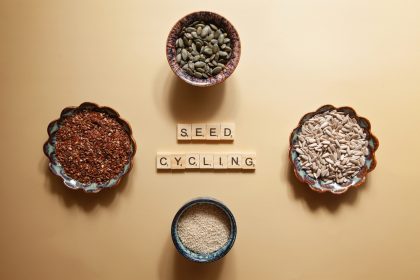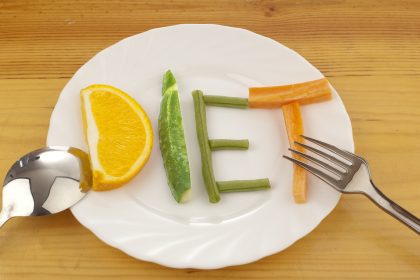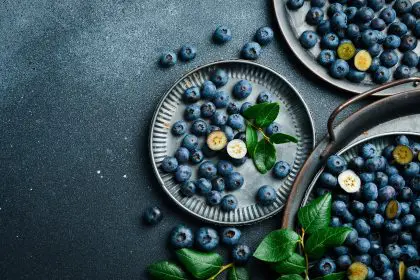The path to healthy aging could be as simple as adding more colorful berries to your daily routine. Women who embrace diets rich in vibrant, flavonoid-packed foods often experience better outcomes as they age, maintaining their strength, independence, and mental clarity longer than those who don’t prioritize these nutritional powerhouses.
As more people around the world are living longer lives, the focus has shifted from simply extending lifespan to improving the quality of those extra years. The concept of aging gracefully has become increasingly important, with many seeking natural ways to maintain their vitality and independence well into their golden years.
The answer might be simpler than expected, lying in the produce aisle of your local grocery store. Berries, with their deep, rich colors and sweet-tart flavors, contain compounds that may hold the key to healthier aging, particularly for women who seem to benefit most from these natural nutrition boosters.
What makes flavonoids so special for aging bodies
Flavonoids represent nature’s vibrant paint palette, creating the stunning reds of strawberries, the deep purples of blueberries, and the rich blues of blackberries. These natural compounds serve as plants’ protection system, shielding them from environmental damage and helping them thrive in challenging conditions.
When we consume these colorful compounds, our bodies appear to harness similar protective benefits. The most potent sources include all varieties of berries, but flavonoids also appear abundantly in dark chocolate, citrus fruits, leafy greens like kale and spinach, green and black tea, and even red wine in moderation.
These remarkable compounds work through multiple pathways in the human body, acting as cellular protectors that help neutralize harmful elements that can accelerate aging. They support healthy blood flow, help maintain flexible blood vessels, and may contribute to preserving both physical strength and cognitive sharpness as we age.
The beauty of flavonoids lies in their accessibility. Unlike expensive anti-aging treatments or complex medical interventions, these compounds are readily available in delicious, affordable foods that most people already enjoy eating.
Women experience remarkable benefits from colorful eating
Women who consistently include high amounts of flavonoid-rich foods in their diets often show impressive results in maintaining their physical capabilities as they age. These women tend to experience better preservation of their strength and mobility, which directly impacts their ability to live independently and enjoy their favorite activities.
The benefits extend beyond physical health to encompass mental and emotional well-being. Women who regularly consume berries and other flavonoid-rich foods often report better mood stability and cognitive function, suggesting these compounds support brain health alongside physical vitality.
The maintenance of physical function becomes increasingly important with age, as it determines whether someone can continue living independently, climbing stairs, carrying groceries, or playing with grandchildren. Women who prioritize flavonoid consumption often find they can maintain these abilities longer than their peers.
Mental health benefits are equally significant, as emotional well-being directly impacts quality of life during the aging process. The brain-protective effects of these compounds appear to support not just cognitive function but also emotional resilience and psychological health.
Men experience different patterns of benefits
The relationship between flavonoids and healthy aging appears to vary between men and women, with each gender experiencing different types of benefits from these natural compounds. While women tend to see comprehensive improvements across multiple areas of health, men often experience more targeted benefits.
Men who consume high levels of flavonoid-rich foods frequently report improvements in mental clarity and emotional well-being. The neurological benefits of these compounds seem to transcend gender differences, offering brain protection and mood support regardless of biological sex.
However, the physical benefits that women experience so dramatically may not manifest in the same way for men. This suggests that biological differences, including hormonal variations and metabolic patterns, may influence how our bodies process and utilize these beneficial compounds.
Understanding these gender differences helps individuals tailor their nutritional approaches to maximize the benefits they’re likely to experience from increased flavonoid consumption.
The science behind flavonoids and cellular protection
The mechanisms through which flavonoids promote healthy aging involve their ability to act as cellular bodyguards, protecting our bodies from the inside out. As we age, our cells face increasing challenges from environmental stressors and internal processes that can accelerate deterioration.
Flavonoids excel at neutralizing harmful molecules that can damage cellular structures. Think of them as tiny shields that help preserve the integrity of our cells, keeping them functioning optimally for longer periods. This cellular protection translates into better overall health and slower aging processes.
These compounds also support the health of our blood vessels, helping them remain flexible and responsive. This cardiovascular protection is crucial for maintaining physical function and mental sharpness, as proper blood flow ensures that oxygen and nutrients reach all parts of the body efficiently.
Additionally, flavonoids help manage the body’s inflammatory responses. While some inflammation is necessary for healing and immune function, chronic low-level inflammation can accelerate aging processes. By helping to keep inflammation in check, flavonoids contribute to healthier aging patterns.
Practical ways to increase flavonoid intake
Incorporating more flavonoid-rich foods into daily routines doesn’t require dramatic lifestyle changes or expensive specialty products. The key lies in adding more colorful, plant-based foods to existing meals and snacks throughout the day.
Morning routines can be enhanced by starting each day with a cup of green or black tea, which provides a substantial flavonoid boost along with a gentle energy lift. Breakfast smoothies offer another excellent opportunity, combining berries with yogurt or plant-based milk for a delicious and nutritious start to the day.
Lunch can be elevated by incorporating leafy greens, colorful vegetables, and fruits into salads or main dishes. Adding sliced apples, berries, or citrus segments to both sweet and savory dishes increases flavonoid content while providing interesting flavor combinations and appealing visual appeal.
Dinner preparations can include flavonoid-rich side dishes like roasted colorful vegetables, berry-based sauces, or desserts featuring dark chocolate. Even simple additions like onions, which contain beneficial flavonoids, can significantly boost the nutritional value of everyday meals.
Snacking presents numerous opportunities to increase flavonoid intake. Fresh berries, a handful of nuts with dark chocolate pieces, or a cup of tea with a piece of fruit can provide steady flavonoid intake throughout the day.
Making flavonoids a lifestyle choice
The journey toward healthier aging through nutrition doesn’t have to be complicated or restrictive. Instead of viewing flavonoid consumption as another dietary rule to follow, it can be embraced as an opportunity to explore new flavors and enjoy more colorful, appealing meals.
Seasonal eating naturally increases flavonoid variety, as different berries and fruits peak at various times throughout the year. Summer brings abundant berries, while fall offers apples and citrus fruits, and winter provides opportunities to enjoy warming teas and comfort foods enhanced with flavonoid-rich ingredients.
The social aspects of eating can also support increased flavonoid consumption. Sharing berry-topped desserts with friends, enjoying tea together, or preparing colorful salads for family gatherings makes healthy eating more enjoyable and sustainable.
Building these habits gradually allows for long-term success. Rather than completely overhauling eating patterns overnight, small daily additions of berries to breakfast, tea instead of coffee occasionally, or colorful vegetables at dinner can create lasting changes.
The future of natural aging support
As our understanding of nutrition’s role in healthy aging continues to evolve, flavonoids are emerging as particularly valuable compounds for maintaining vitality throughout life. The evidence suggests that these natural substances offer an accessible, enjoyable approach to supporting both physical and mental health as we age.
The beauty of this approach lies in its simplicity and sustainability. Unlike complex medical interventions or expensive supplements, flavonoid-rich foods are widely available, affordable, and naturally delicious. They can be incorporated into virtually any eating style or cultural cuisine.
Starting these dietary habits early in life may provide cumulative benefits, but it’s never too late to begin incorporating more colorful, flavonoid-rich foods into daily routines. The protective effects of these compounds can benefit people at any stage of life.
The evidence suggests that simple dietary choices made today could significantly impact how we experience our later years, offering hope for more vibrant, independent, and fulfilling aging experiences for generations to come.

















